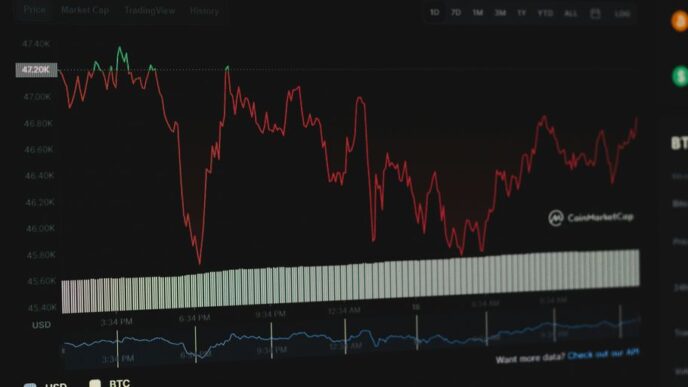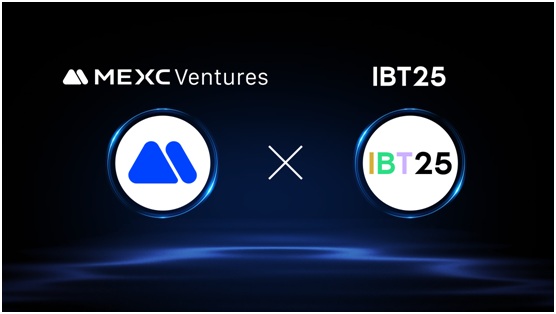Blockchain technology has revolutionized the way we perceive modern industries, giving birth to a digital era of transparency, security, and efficiency. From its humble beginnings as the foundation of cryptocurrencies like Bitcoin, blockchain has evolved into an innovative force that is reshaping various sectors across the globe. In this blog post, we will explore the fascinating journey of blockchain’s evolution, uncovering how it has impacted industries such as finance, healthcare, supply chain management, and much more. Get ready to embark on a captivating adventure through time and witness firsthand how this groundbreaking technology is transforming our world for the better!
Introduction to Blockchain Technology
A blockchain is a digital ledger of all cryptocurrency transactions. It is constantly growing as “completed” blocks are added to it with a new set of recordings. Each block contains a cryptographic hash of the previous block, a timestamp, and transaction data. Bitcoin nodes use the block chain to differentiate legitimate Bitcoin transactions from attempts to re-spend coins that have already been spent elsewhere.
What is Blockchain Technology?
A blockchain is a digital ledger of all cryptocurrency transactions. It is constantly growing as “completed” blocks are added to it with a new set of recordings. Each block contains a cryptographic hash of the previous block, a timestamp, and transaction data. Bitcoin nodes use the block chain to differentiate legitimate Bitcoin transactions from attempts to re-spend coins that have already been spent elsewhere.
The Evolution of Blockchain Technology
Blockchain technology was first introduced in 2008 when Satoshi Nakamoto published his white paper “Bitcoin: A Peer-to-Peer Electronic Cash System”. This system proposed what is now known as the blockchain – a distributed database that maintains a continuously growing list of ordered records called blocks (Marinov, 2015). Each block contains a timestamp and link to the previous block, creating an immutable chain that is computationally impractical for anyone to alter retroactively (Nakamoto, 2008).
History of Blockchain Development
The first generation of the digital revolution brought us the Internet of information. The second generation, powered by blockchain technology, is bringing us the Internet of value: a new platform for assets and transactions.
Blockchain is a shared, tamper-proof ledger that enables trust, transparent visibility of activity, and easier collaboration among disparate parties. Unlike other ledgers, such as those maintained by banks or governments, no single party controls the blockchain. Rather, it is jointly maintained by all participants in the network. This allows blockchains to be open global platforms that everyone can use to verify and transfer value – without the need for expensive intermediaries.
The development of blockchain technology began with Satoshi Nakamoto’s release of the Bitcoin white paper in 2008. Blockchain 1.0 represents the early stage of development, where the focus was on creating a decentralized cryptocurrency (Bitcoin) that could serve as an alternative to traditional fiat currencies.
Since then, blockchain technology has evolved to solve different problems beyond just payments. The next phase of development, known as Blockchain 2.0, represents applications that go beyond just payments and into areas such as smart contracts, asset management, and provenance tracking. These applications require more sophisticated functionality than what was available in early generations of blockchain technology.
As we move into Blockchain 3.0, we are seeing even more ambitious projects that aim to provide a platform for everything from identity management to supply chain traceability. These projects are still in their early stages of
How Blockchain is Revolutionizing Industries
Blockchain, the digital ledger technology that underlies cryptocurrencies like Bitcoin, is slowly but surely revolutionizing a wide range of industries.
From banking and finance to supply chain management and healthcare, blockchain is being used to streamline processes, increase transparency and security, and reduce costs. Here are just a few examples of how blockchain is changing various industries for the better:
Banking and finance: Blockchain can be used to streamline financial transactions, reduce fraudulent activities, and speed up settlements. For example, banks are using blockchain to issue loans and process payments more quickly.
Supply chain management: Blockchain can be used to track goods as they move through the supply chain from suppliers to manufacturers to retailers. This allows businesses to ensure that their products are not counterfeit and that they are receiving the correct items.
Healthcare: Blockchain can be used to securely store medical records and share them with authorized individuals. This can help improve patient care by giving doctors access to important information about their patients.
Financial Services
The financial services industry has been one of the earliest adopters of blockchain technology. The first use case of blockchain in the financial services industry was for the trade finance platform TradeLens, developed by IBM and Maersk. TradeLens is a permissioned blockchain platform that allows for digital tracking of shipments and documentation. The platform is being used by a number of major banks and logistics firms, and is reportedly processing over 20 million shipping events per day.
Other early adopters of blockchain technology in the financial services industry include J.P. Morgan, whose JPMorgan Chase & Co. subsidiary developed the Quorum blockchain platform, and Goldman Sachs, which has invested in a number of blockchain startups including Berlin-based Bitwala and New York-based Circle Internet Financial.
Blockchain technology is also being explored by a number of central banks for potential use in digital currencies and other applications. The Bank of England has been particularly active in this area, with its governor Mark Carney noting that a central bank-issued digital currency could have “significant implications” for monetary policy, financial stability, and payment systems. Other central banks exploring the potential use of blockchain technology include the Monetary Authority of Singapore and the Hong Kong Monetary Authority.

Healthcare
The healthcare industry is one of the many industries that are being disrupted by blockchain technology. The use of blockchain in healthcare can help to improve the quality of care, reduce costs, and increase transparency and security.
Blockchain technology can be used to create a decentralized health records system. This would give patients more control over their own health data and allow them to easily share it with their doctors or other healthcare providers. It would also make it more difficult for criminals to tampering with or falsifying medical records.
Blockchain-based smart contracts could also be used to automate some of the administrative tasks in the healthcare industry such as insurance claims processing. This would not only save time and money but also help to reduce errors and fraudulent activity.
Some startups are already working on applications of blockchain technology in healthcare. MediBloc is a platform that allows patients to store and manage their health data on a blockchain. CareHub is using blockchain to create a secure network for sharing patient health data. And ProCredEx is developing a blockchain-based system for verifying and credentialing medical professionals.
It is still early days for blockchain in healthcare, but the potential applications are numerous and the industry is taking notice. We can expect to see more innovation in this area in the years to come
Supply Chain Management
The Supply Chain is the network of facilities and distribution options that receive, produce, and ship products to customers. The term “supply chain management” (SCM) was first coined by a professor at the Massachusetts Institute of Technology in the early 1990s.
The goal of SCM is to design and operate supply chains in a coordinated manner in order to meet customer demand. The main challenge of SCM is the management of information flow between different parts of the supply chain.
With the advent of blockchain technology, there is now a new way to manage information flow in supply chains. Blockchain technology can be used to create a decentralized database that allows for transparent and secure information sharing between supply chain partners. This could potentially revolutionize SCM by reducing costs, increasing efficiency, and improving trust between supply chain partners.
Only time will tell how big of an impact blockchain technology will have on SCM, but it is certainly worth keeping an eye on this emerging technology.
The Future of Blockchain Technology
The evolution of blockchain technology is inevitable. With the increasing demand for digital transformation, blockchain is becoming more and more relevant to businesses across all industries. Here’s a look at how blockchain technology is currently being used, and how it will impact various industries in the future.
Blockchain technology is most commonly associated with Bitcoin and other cryptocurrencies. However, the potential applications of blockchain go far beyond cryptocurrency. Blockchain is a distributed database that provides a secure way to store data that can be shared among multiple parties. The data is stored in blocks that are chained together, making it tamper-resistant. This makes blockchain an ideal solution for securing sensitive data, such as financial transaction records or medical records.
In the financial sector, blockchain is already being used to streamline back-office processes and settlement times. For example, banks are using blockchain to settle trades faster and reduce the risk of fraud. In the future, we will see more widespread adoption of blockchain by financial institutions as they look to further improve efficiencies and reduce costs.
The healthcare industry is another area where blockchain has great potential. Blockchain can be used to securely store patient health records and track the provenance of medical devices. This would help to ensure that patients receive safe and effective treatments, and that counterfeit products are not being sold on the black market.
The logistics industry is also beginning to explore how blockchain can be used to improve supply chain management. By tracking items through the supply chain on a decentralized platform,
Conclusion
The potential of blockchain technology for revolutionizing industries that range from finance to healthcare cannot be overstated. With its distributed ledger system, firms can securely store and coordinate data between different nodes in a much more efficient manner. Moreover, the decentralization brought about by blockchain systems allows companies to drastically reduce transaction costs while ensuring greater privacy for their users. As such, the evolution of this technology is sure to have far-reaching effects on many different sectors.













